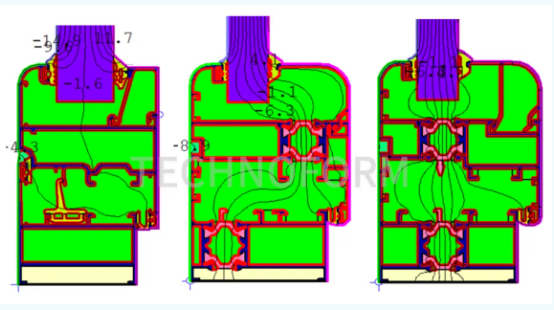The Relationship between the Distribution Location of the Window Isotherm and the Overall Window U - value
An isotherm is a line connecting points with the same temperature value on a chart.
The isotherm of doors and windows is usually observed and measured through equipment such as thermal imaging cameras or thermometers. We can also carry out simulation calculations through software.

The Relationship between the Distribution Location of the Window Isotherm and the Overall Window U - value
An isotherm is a line connecting points with the same temperature value on a chart.
The isotherm of doors and windows is usually observed and measured through equipment such as thermal imaging cameras or thermometers. We can also carry out simulation calculations through software.
1. Thermal Conductivity of Materials:
The poorer the thermal conductivity of the door and window materials, the denser the isotherms will be, and the better the heat - insulation effect will be.
In order to reduce the heat transfer coefficient of doors and windows, some materials with better heat - insulation properties can be selected for the frame materials, such as wood, broken - bridge aluminum profiles, etc. These materials can reduce heat transfer and thus improve the isotherms of doors and windows.
2. Foam Filling:
The heat - insulation cavity and the periphery of the glass are prone to convective and radiative heat transfer. Filling foam materials in such positions, such as foams made of nylon, PE, PU and other materials, can effectively reduce heat transfer in this area.
3. Using Insulating Glass:
Insulating glass can reduce heat transfer through Low - E coating technology, inert gas filling, vacuum technology and the use of warm - edge spacers, thereby improving the thermal performance of doors and windows.










